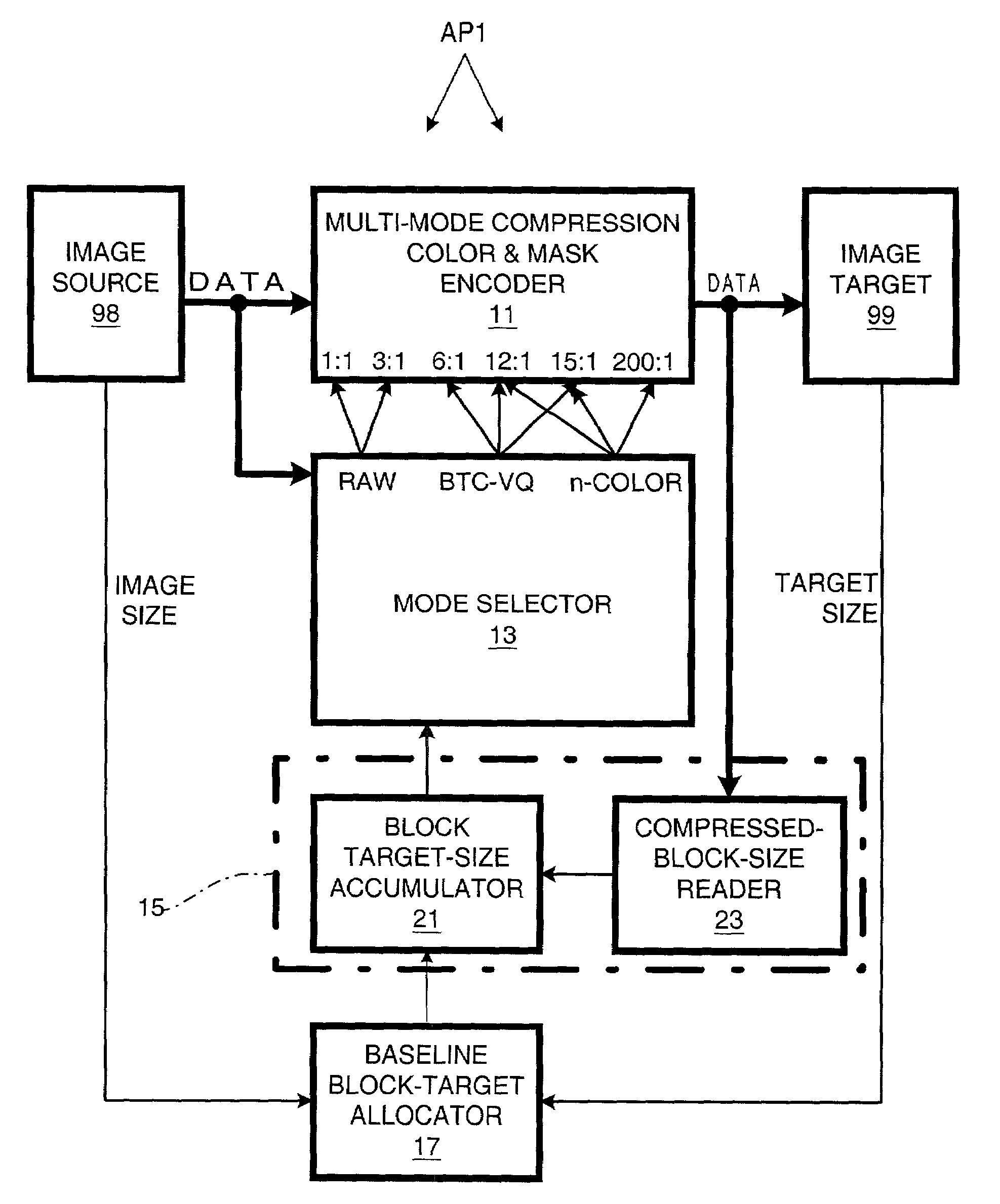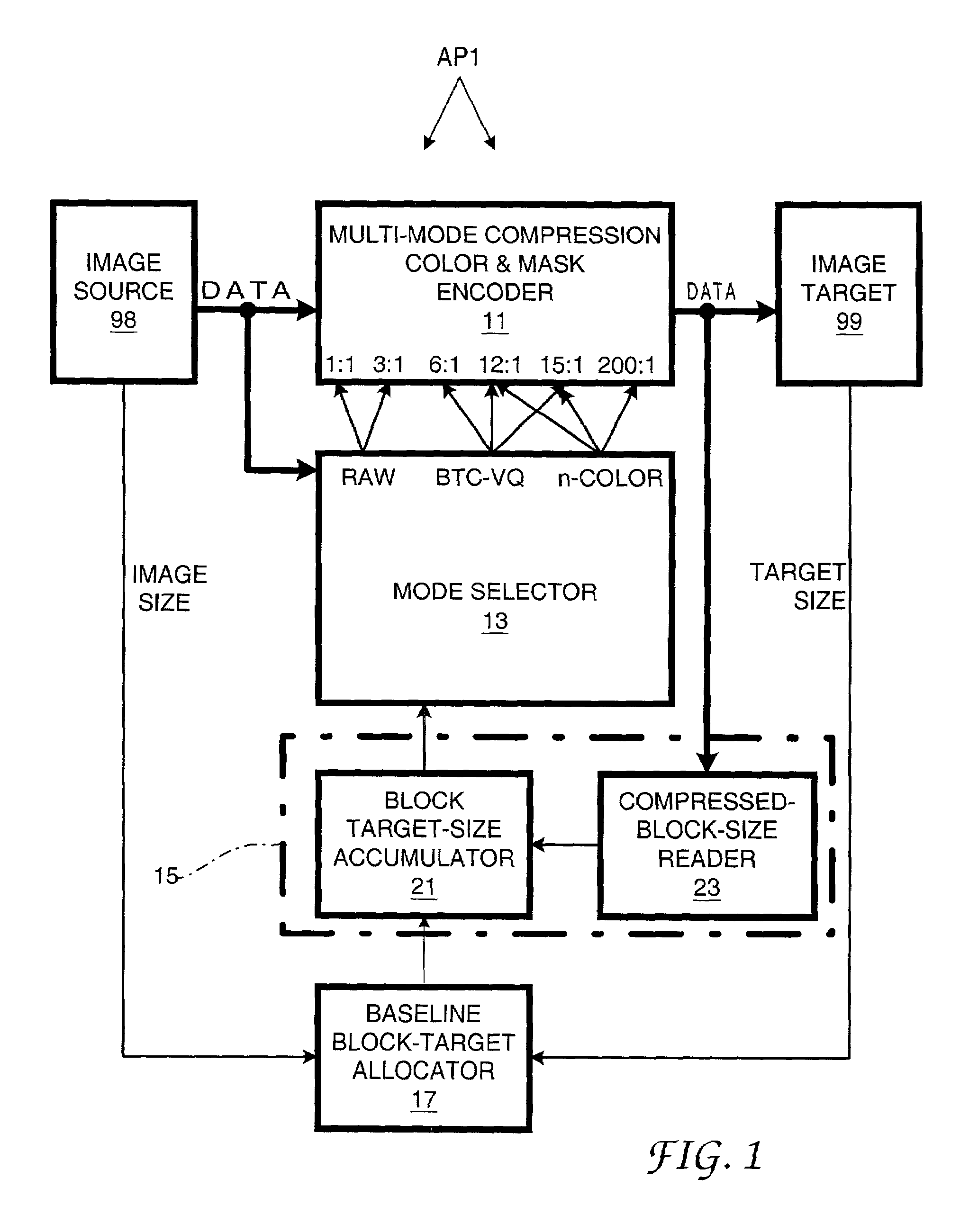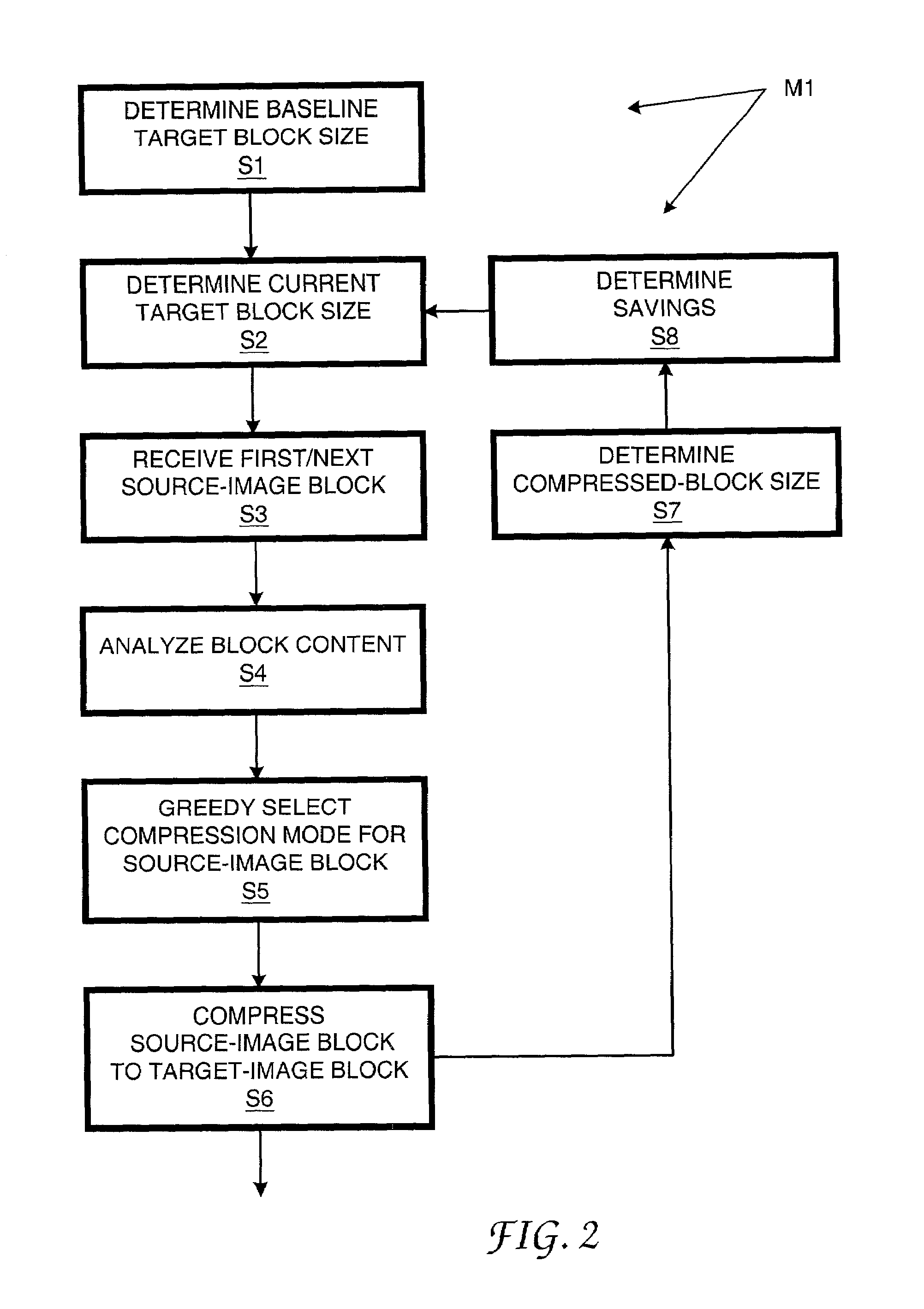Single-pass guaranteed-fit data compression using rate feedback
a data compression and rate feedback technology, applied in the field of data processing, can solve the problems of loss, insufficient memory to store a full-size uncompressed image, image processing and processing a resource-intensive task, etc., and achieve the effect of reducing the cost of both software and hardwar
- Summary
- Abstract
- Description
- Claims
- Application Information
AI Technical Summary
Benefits of technology
Problems solved by technology
Method used
Image
Examples
Embodiment Construction
[0028]In accordance with the present invention, a compression system AP1 receives image data from an image source 98 and provides compressed image data to an image target 99, as shown in FIG. 1. Compression system AP1 can be embedded in a color laser printer that also includes image target 99 in the form of an image-storage buffer. Image source 98 can be a host computer; the source image data need not be accessible at any one time by compression system AP1. Instead, image source data is serialized, e.g., as a series of blocks, for presentation to compression system AP1.
[0029]Compression system AP1 comprises a compressor-encoder 11, a mode selector 13, an evaluator 15, and a baseline-block-target allocator 17. Baseline-block-target allocator 17 determines the amount of compression required to achieve a desired target size for an image. This determination is made by comparing a source-image size (typically indicated in a header for the source image file) with a known capacity of image...
PUM
 Login to View More
Login to View More Abstract
Description
Claims
Application Information
 Login to View More
Login to View More - R&D
- Intellectual Property
- Life Sciences
- Materials
- Tech Scout
- Unparalleled Data Quality
- Higher Quality Content
- 60% Fewer Hallucinations
Browse by: Latest US Patents, China's latest patents, Technical Efficacy Thesaurus, Application Domain, Technology Topic, Popular Technical Reports.
© 2025 PatSnap. All rights reserved.Legal|Privacy policy|Modern Slavery Act Transparency Statement|Sitemap|About US| Contact US: help@patsnap.com



